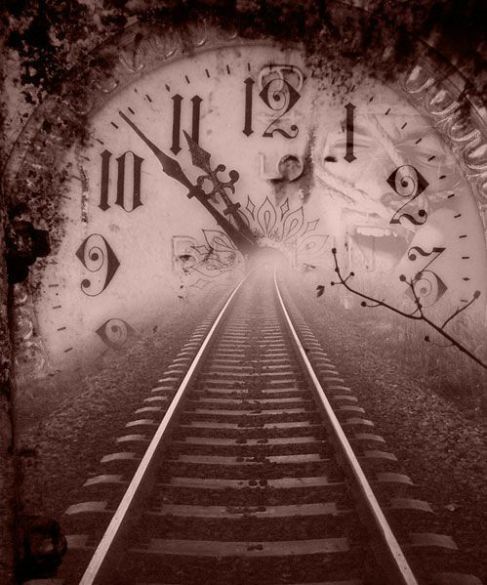Jenny Randles explores time anomalies in her recent book
Reviewed by Douglas Chapman
Jenny Randles’ new book is a fascinating, if loosely organized, look at the concept of time travel, and the possibilities that it may actually be happening.
Randles presents many of the theories on the subject,a nifty one, whatever its validity, being that what we experience as UFO aliens are time travellers from various parts of the future. This would certainly explain why the beings show an interest in humanity. Another wonderful speculation concerns the real reason for the sinking of the Titanic being as deadly as it was. It seems that the ship’s weight was supplemented by the presence of all those voyeuristic time travellers who wanted to experience the last few minutes of the famous ship’s existence. “They were not recorded in any log-book,” she writes. “They could not be added to calculations about depth of passage below the water line. And none of them hung about when the ship started to go down.”
The book is full of anecdotes about people who have experienced what seemed to be time strangenesses. These include those who heard sounds from years past, and those who encountered alleged Brigadoon-like disappearing communities. Interestingly, some have thought the latter might mask unearthly abduction scenarios. Other fascinating items include cars and dogs which disappeared into and often reappeared from cloudy vortexes, Lindsay Wagner‘s physical premonition of an aircraft disaster, Randles’ own premonitory dream of the space shuttle Challenger disaster, the allegedly time-bending Philadelphia experiment, human figures who only showed up in photographs, and anachronistically early human-related fossils which could be evidence of time-travellers.
One way to look for such people, Randles suggests, is to search through photos of crowds around major disasters and try to find the same faces in various eras. “Such evidence may not exist at all or may be very hard to find even if it does. But how will we know unless we try?” One could also look for reports of UFOs around these times and places.
Even now, there are people who have actually claimed the ability to travel through time. Randles examines these as well. But the book’s range is not limited to the purportedly factual; fictional time travel in books and movies is also covered, from A Connecticut Yankee in King Arthur’s Court to Somewhere in Time.
In the movies, one favorite technique is to construct a time machine. Other ways of getting about include mere willpower, and a wide variety of other methods. But the “non-fictional” ideas are the book’s strength. To offer just one example, she suggests a way that you might pick up future images by setting up your VCR.
While this sounds less convincing than some of the ideas presented herein, it does show the book’s best feature,that Randles is willing to consider many options and doesn’t shut out avenues of inquiry that are potentially rewarding.
TIME TRAVEL: Fact, Fiction and Possiblity
by Jenny Randles Blandford, London, 1994, 204 pages, hardcover, $24.95; paperback , $9.95 plus $3.00 shipping. Available from Strange Bookshop, P.O. Box 2246, Rockville, MD 20847. E-mail strange1@erols.com.
Douglas Chapman’s review is an extended version of the one published in Strange Magazine 14.

